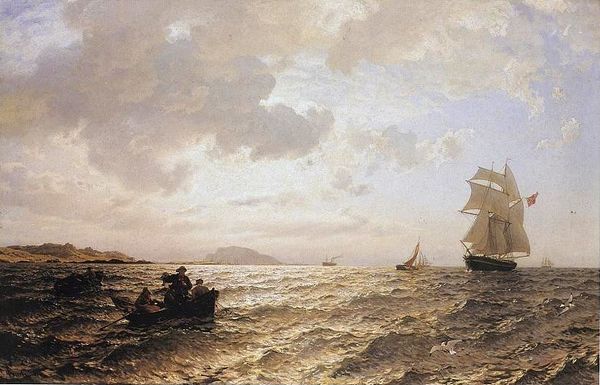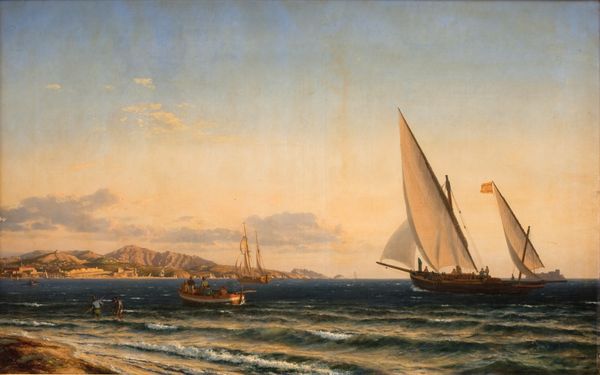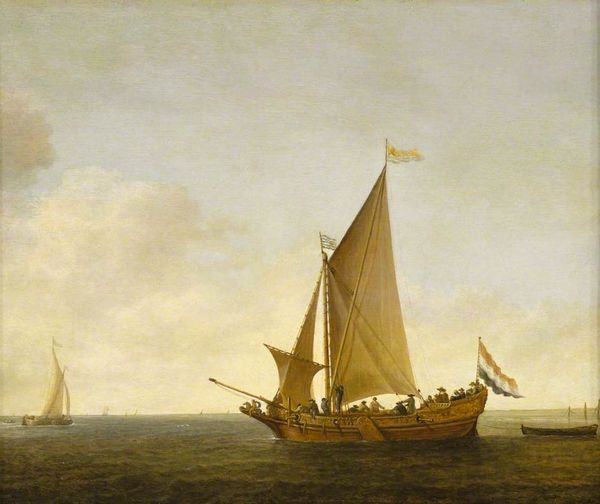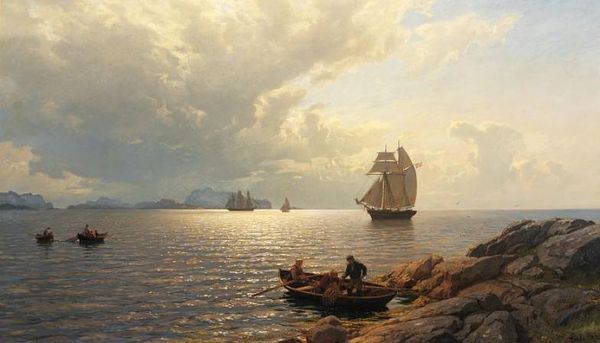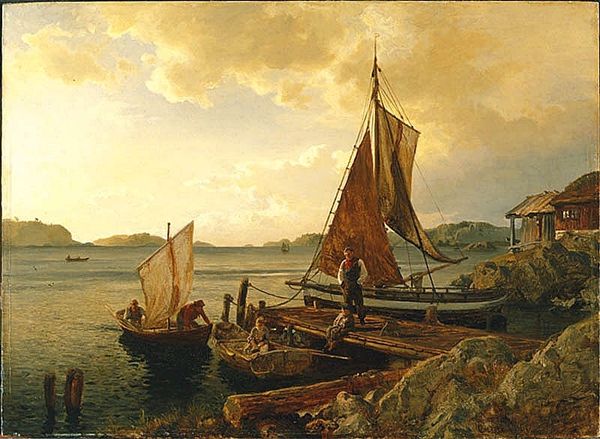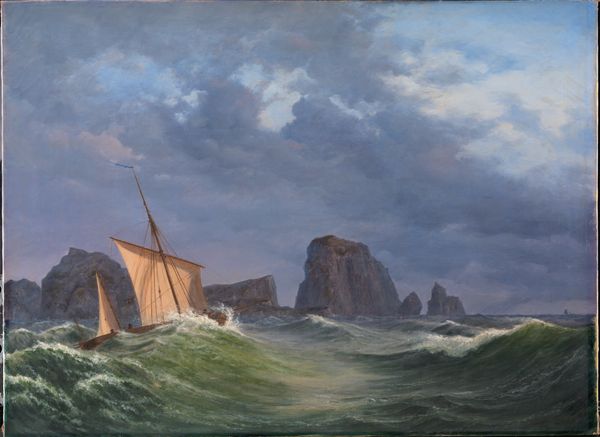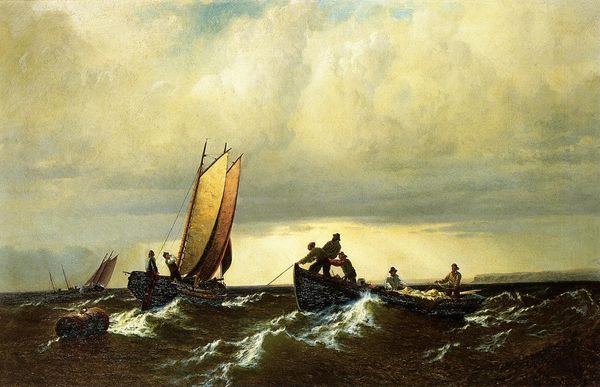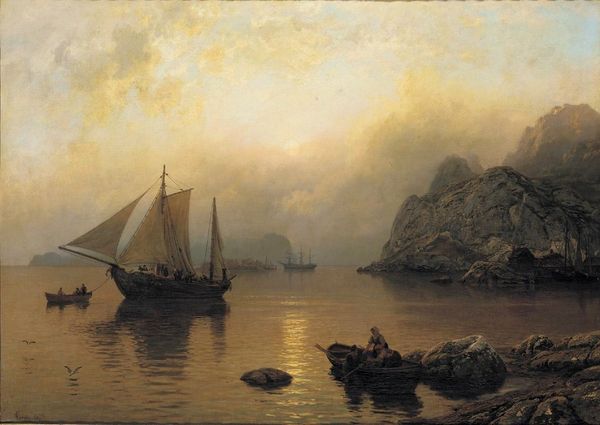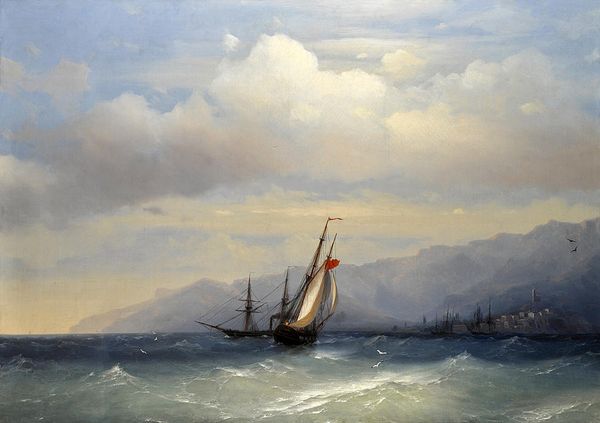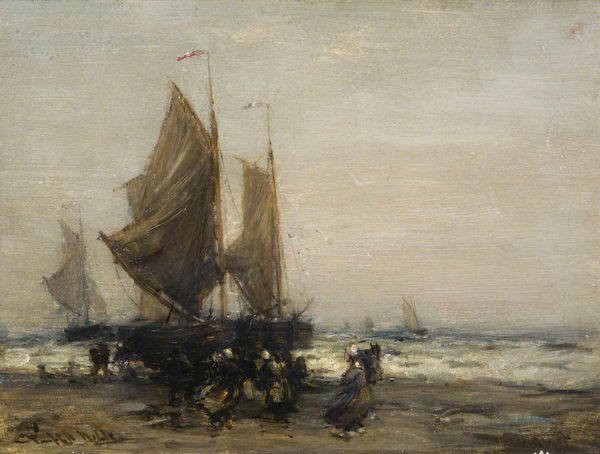
Copyright: Public domain
Curator: Look at the impasto of the waves in "Sailboats on the Fjord," painted in 1880 by Hans Gude! Don't you just want to dive into the thick of it? Editor: It certainly has a brooding quality to it. All that choppy water! The sailboats bobbing like toys against the cliffy coastline… Makes me think about the precarity of maritime labor. Curator: Precarity, perhaps, but there's such romanticism! Gude captures a moment of quiet grandeur, those sails billowing like clouds themselves. Makes me dream of adventure, open sea. Editor: Well, that billowing comes from somewhere. These boats—and the little rowboat upfront, too—are constructed things. From timber felled somewhere, canvas woven. Who produced those materials? Where are they from? These paintings always omit a material biography. Curator: Okay, Mr. Shopclass, can't an artist simply express the spirit of the sea without an itemized bill of materials? Editor: But, spirit emerges through material! Gude’s brushstrokes may seem effortless, capturing light on the waves, but somebody literally made this happen, felled and prepared wood to construct the boat. This connects to broader questions around labor, capital, consumption—it gives deeper, political layers to what might just look like pretty scenery. Curator: Fair enough. It is tempting to just let the image wash over you... the silvery light, those gulls like fleeting thoughts... but you're right, every image is built. It is so easy to forget all of the stuff needed to make the materials for this painting alone. Editor: Exactly. Oil paints require pigments, often mined, mixed, transported... And it gets lost in the… "romance." Curator: Yes. Well, I won't look at a boat the same way again, even if it does kind of burst the dreamy bubble. Editor: Art isn’t just aesthetic; it’s deeply rooted in material reality. Hopefully, a fuller perspective!
Comments
No comments
Be the first to comment and join the conversation on the ultimate creative platform.
